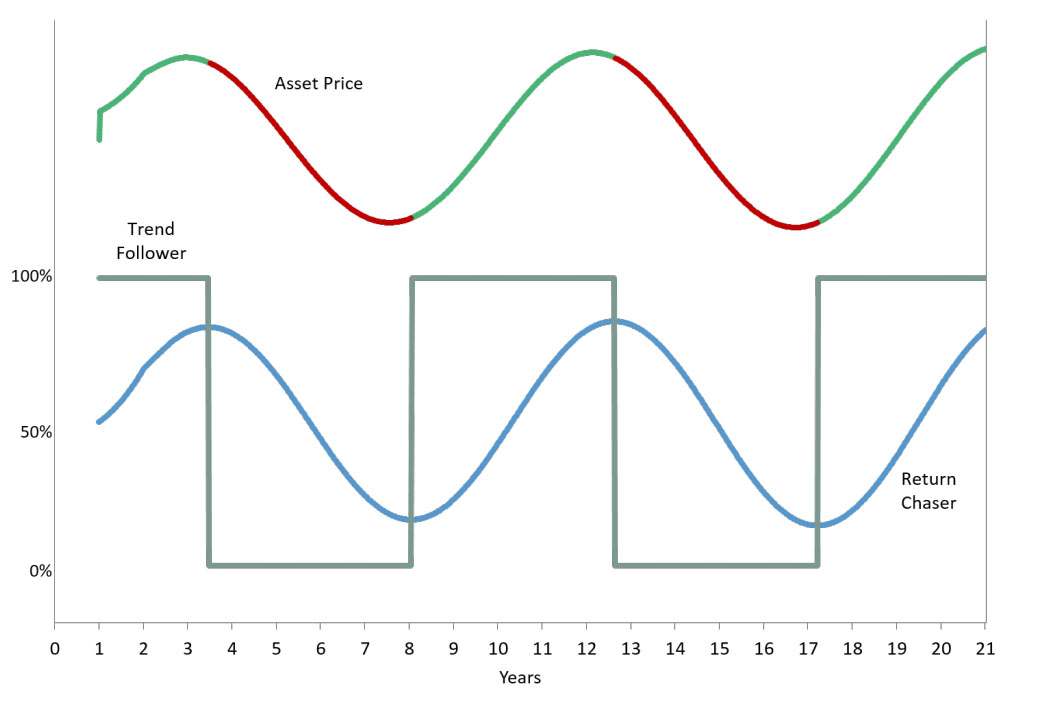What’s the difference between trend-following and return-chasing? Trend-following actually works, according to research by Elm Partners.
The study defined trend-following as buying stocks as soon as the returns are good and holding until the returns become bad, at which point investors sell and do nothing until returns are positive again. The strategy differs from the more discretionary and reactive return-chasing, Elm Founder Victor Haghani and Portfolio Manager Samantha McBride argued, because it involves a predefined set of rules.
“Return chasers are often unaware of their behavior, creating a slower moving, self-reinforcing herding phenomenon, based on the simple, readily available, and intuitively appealing heuristic of recent past returns,” wrote Haghani—one of the founding partners of Long-Term Capital Management—and McBride.
Where trend followers buy or sell everything at once, return chasers transact a few stocks at a time, and continue to do so until the market changes.. This small difference in implementation led to a big difference in results, the researchers found.
Using historical US monthly equity data, Haghani and McBride compared how the two strategies would fare from 1872 to 2015. While the return chaser consistently underperformed a 50/50 portfolio of stocks and treasury bills, the momentum investor outperformed.
A probability simulation confirmed these results, with the trend follower outperforming the 50/50 portfolio by 7.3% over a 20-year period. Furthermore, the momentum investor had a Sharpe Ratio of 0.62—high enough to prove the results were “not just a random outcome,” the authors said. The return chaser’s Sharpe Ratio of -0.18, on the other hand, was “close enough to zero that it would take a long time to conclude that he is following a harmful strategy.”
“Ironically, the return chasers probably feel they are being prudent and wise to adjust their allocations slowly, scaling in and out of their investments as they get confirmation they’re doing the right thing, as compared to trend followers who dive in fully to their adjustments and hold until it’s time to go the other way,” Haghani and McBride wrote.
 Source: “Return Chasing and Trend Following: Superficial Similarities Mask Fundamental Differences“
Source: “Return Chasing and Trend Following: Superficial Similarities Mask Fundamental Differences“
Related: Capturing the January to Halloween Premia—on the Cheap & Why Only Active Managers Can Ride the ‘Momentum Wave’




























